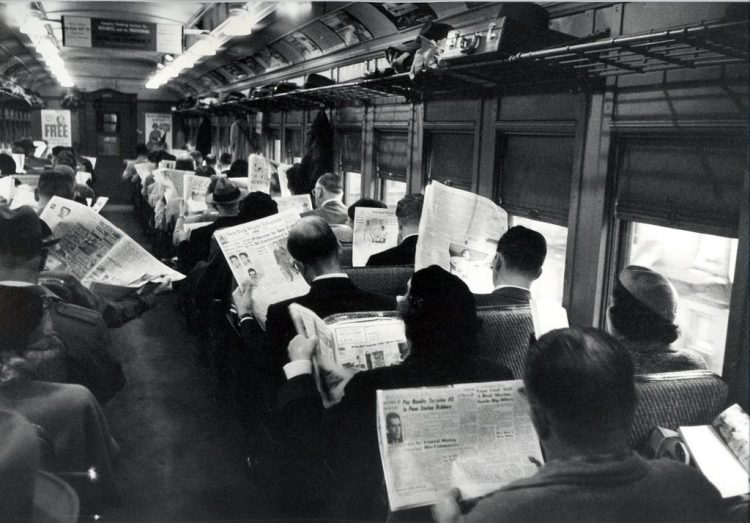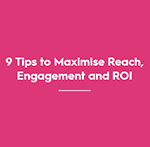When it comes to marketing budgets, there’s always a push/pull between the various types of paid advertising you can undertake.
In terms of how that budget is split between digital marketing and other ‘traditional’ media channels like television or print advertising, you probably won’t be surprised to read that I, a digital marketer, believe that online deserves greater weight in those conversations.
In this article, I’m going to try and make the case for why that’s a rational and reasonable position. To that end, I’ll lay out why, when stacked up against traditional media, digital marketing always wins.
Targeting

The most powerful and effective advertising is often the most targeted, this has long been understood both in traditional and digital media. Television ads are targeted by the demographic most likely to watch the programme they’re going to be shown within, ads in industry specific magazines can be far more targeted than those in national newspapers, and so on.
While you could see this as a strength of traditional media, the issue here is that this kind of targeting can always be bested by what you can achieve through digital platforms.
Sure, you can determine that a specific demographic is most likely to be watching a particular hour of television but you can’t go beyond that. You can’t determine if they’ve interacted with your brand previously, or if they’re an existing customer, or if they just happen to be watching with someone who does fall into your target demographic and is actually a complete miss for the kind of proposition you’re leading with.
Digital marketing doesn’t suffer with that issue, at least not on the same scale. You can choose to target a specific publication or users interested in a specific television show if you wish, or you can take a far more granular approach to targeting.
Target people who are in-market for your product through Google’s intent audiences, or bring back users who have directly interacted with your brand in the past with Facebook remarketing… the possibilities go on and on.
The key here is that you can tailor that targeting to fit your audience and your objective, rather than having to rely on there being a TV show or magazine that has already pinned down your consumer base.
That said, these potential disadvantages with television advertising might soon be a thing of the past. Technology that is currently driving strong results in the digital marketing sphere might soon be coming to television advertising, with programmatic TV ads coming to Sky next year.
Tracking
![]()
Related to the superior ability to target your audience, is the superior accountability digital platforms provide.
Traditional media can give you likely exposure figures – for example, if you’re looking to buy advertising space on the London underground, you’re likely to see some very impressive reach figures.
However, what you won’t get is ongoing or post-campaign actuals. You won’t know how many of your target audience saw those ads, how many of them engaged with them, or how many of them went on to make a purchase.
With something like a newspaper or television ad, it’s hard to make these kinds of measurements. Conversely, this kind of tracking is bread and butter stuff for a digital marketing agency like us.
The knock-on effect of this is that it’s also difficult to make on the fly improvements to a traditional advertising campaign, as getting clear visibility of what is or isn’t working on a day to day basis is extremely challenging. Furthermore, if you were to determine that a quick change of direction was required, it’s much more problematic to get that change put in place – you can’t change the ad that’s already been aired or printed.
This is again where digital marketing forges ahead. We have better data and can more easily and effectively react to that data. This means that, with the right people running your campaign, you ultimately get superior results for your media spend.
Transformation

While the two points above are more about the limitations caused by the nature of traditional media, this issue is more of a cultural one.
Let’s take print media as an example, still seen in many circles as a giant of the advertising world.
Using figures provided free from the Audit Bureau of Circulations, we can compare the total circulation of UK newspapers in January of 2019 compared to January 2009.
Looking at the 15 highest circulation newspapers in the UK, including free publications like Metro, we can get a top-level view of how this former centrepiece of advertising in the UK has declined in the last 10 years.
What we can see is that overall circulation of these newspapers sits at 11.2 million in January 2009, and drops to around 7.6 million in January 2019. That’s a decline of 46.6%. As a person who would rather read a hardback than a kindle, it pains me to write this – but the sad truth is that print is either dying or at the very least dwindling.
And that’s not necessarily an indication that print has in any way reduced in quality. It’s more an indication that the way we consume media has changed. That in itself is one of digital marketing’s greatest strengths. It lives where we spend our time and unlike print, billboard or television advertising, which are all constrained by the mediums in which they exist, digital can shift and evolve as the focus of our attention changes.
You can see this in the way digital marketing has responded to the rise of mobile – with the introduction of new technologies and opportunities that turn the device from a barrier into an opportunity.
When we go from this…

to this…

there can only be one winner.
A joined-up approach
While I’m advocating for the strengths of digital and for a greater consideration of digital channels in the marketing mix, the reality is that a joined-up strategy – where both digital and traditional media play their part – is where you should be aiming to be.
Working with clients that take this approach, we’ve seen cases where digital performance is lifted over the period of time when television campaigns are live. While we don’t have the ability to fully attribute those kinds of journeys (yet), with new television advertising technology coming soon we might be able to better close that loop in the future.
If other forms of traditional media can find ways to evolve in the same way, providing better visibility and the ability to show definitive value in the way that digital channels can, then perhaps the future for traditional media could be a little rosier.
Make the most of your media budget
If you want to find out how digital could be the right place for your media budget, then we’d love to talk to you about the opportunities that exist. Equally, if you’re already doing digital then we’d love to help you identify where those all-important optimisations can be made.
In the mean-time, if you’d just like some more ideas then download one of our guides – like 9 Tips to Maximise Reach, Engagement and ROI.

